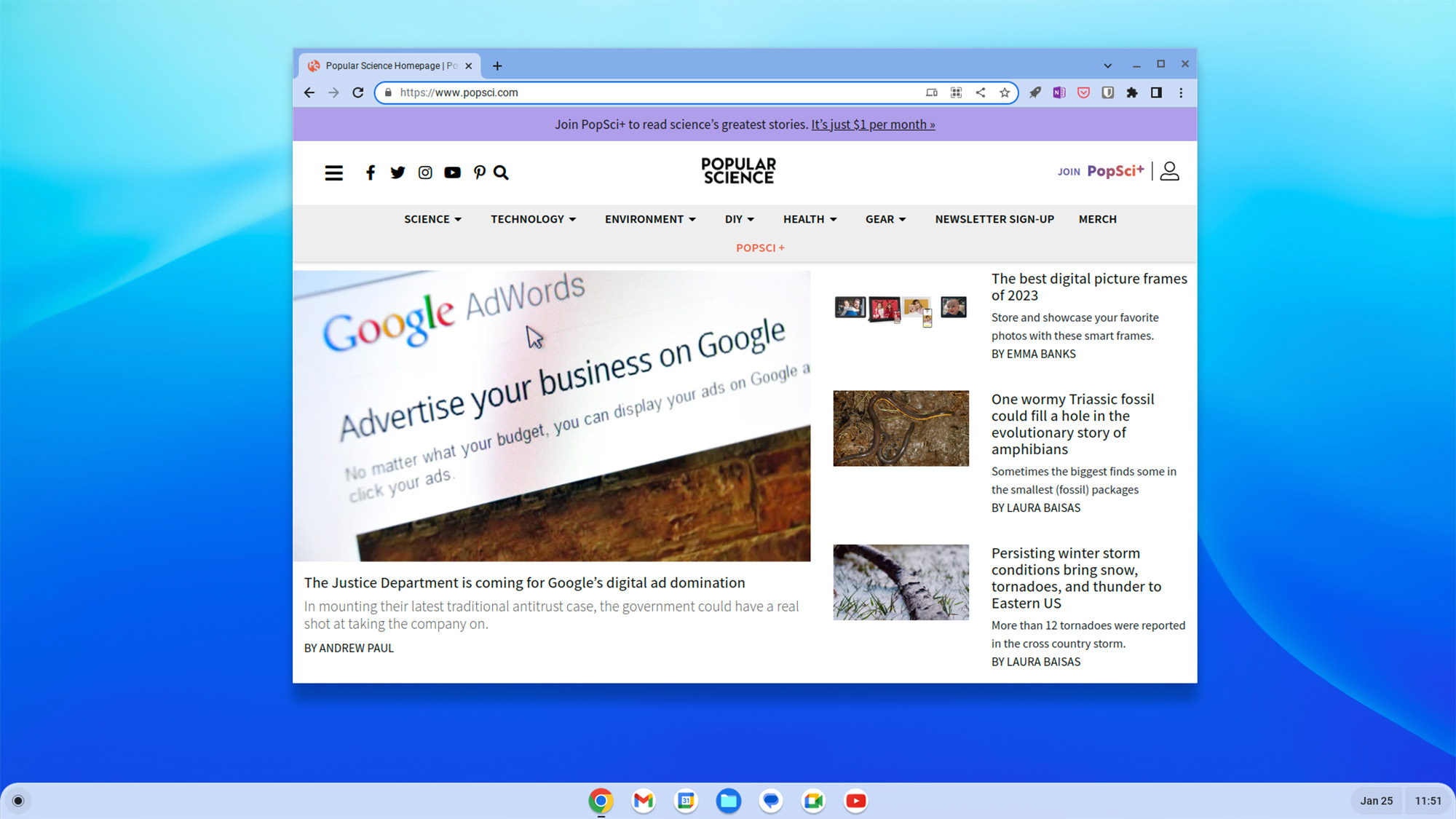

The latest versions of Windows and macOS have a long list of system requirements, resulting in many devices not being able to keep up. Over time, old iterations of software stop getting updates, which in this case means your computer will be useless.
But before you abandon your old laptop, consider giving it new life by turning it into a dedicated Chrome device. Google’s free operating system makes it possible and it’s fairly easy to set up.
ChromeOS Flex can turn any old PC or Mac into a Chromebook—even ones you’d consider too slow and outdated to use. This is a great solution if you can’t or won’t upgrade your machine, or just need a general-purpose computer for the family.
What to know before you start
Before you blow the dust off of your ancient laptop, there are a few things you need to keep in mind.
First, ChromeOS Flex doesn’t offer every feature a Chromebook does. You won’t be able to install Android apps or Parallels, for example, and there’s no Linux development environment, either. The good news is that this won’t be a problem if you just want a computer for web browsing. The operating system also has minimum requirements, and it’ll only work on x86 processors. That’s basically anything made by Intel or AMD.
[Related: The best Chromebook add-ons and tricks]
Finally, a warning—installing this version of ChromeOS will completely delete everything on your computer, so before you start, make sure you back up any data you don’t want to lose.
What you will need to install ChromeOS Flex
First of all, you will need an older laptop or desktop computer. Google offers a list of certified devices—if your machine is on that list, you are good to go. But even if it’s not, there’s a chance you’ll be able to make it work. I installed the OS on my Macbook and an old desktop computer that doesn’t support Windows 11, and both worked well for me.
You’ll also need a USB flash drive or SD card, with at least 8GB of storage space. Note that this process will also completely erase everything on the drive, so make sure there’s nothing important there either.
Finally, you will need access to Google Chrome. This can be the same computer you intend to install ChromeOS Flex on, or it can be another machine entirely.
Start by creating a boot drive
The first thing you’ll need to do is put ChromeOS Flex on a flash drive or SD card.
On the computer running Google Chrome, plug in the flash drive and install the Chromebook Recovery Utility. Run it, click Get Started, and on the Select a model from a list drop-down menu, choose Google ChromeOS Flex.
Click Continue and select your flash drive from the drop-down menu. Make sure you choose the right drive—otherwise, you might end up overwriting something completely different. When you’re ready, click Create Now.
The tool will download the operating system and turn your flash drive or SD card into a bootable drive. This will take a while—for me, it was about 15 minutes but your experience will vary depending on your internet speed and other factors. You will eventually see a message telling you the drive is ready.
Boot from the drive and try things out
If it isn’t off already, turn off the device you want to run ChromeOS Flex on, and plug in your flash drive or SD card. Now you can turn on the computer.
In most cases, your machine will boot right from the drive, but if that doesn’t happen, you will need to press a certain key right after turning on the computer—most likely, F2 or F12 on PCs. Right after that, just follow the directions.
[Related: Best Chromebooks of 2023]
On a Mac it’s a little easier: just hold the Option key after turning the computer on and the system will ask you which device you want to boot from.
Eventually, you will see a screen welcoming you to ChromeOS Flex—click Try it first to give the software a spin. You can sign in using your Google account, if you like, or try things out as a guest. If you find everything is working well and you’re happy to completely delete your computer’s drive, it’s time to install.
Installing ChromeOS Flex
As we warned you before: installing ChromeOS Flex will completely delete everything on your computer. Don’t continue unless you’re okay with that. If you are, sign out of your Google account by clicking the clock in the bottom-right corner of your screen. This will take you back to the welcome menu—this time, click Install ChromeOS Flex.
When the process is done you can shut down your computer, unplug the USB drive or SD card, and boot directly into ChromeOS. You will need to sign in to your Google account, even if you did while testing things out, as settings don’t carry over from the live version.
After that, you will have what feels like a brand-new Chromebook, even if the device itself is a decade old. It’s a great way to get more use of a device you’d otherwise give up on.
